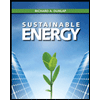Week 16-17 Application of DE of Order One Name: Section: 7. A tank originally contains 100 gals of fresh water. At time t=0, a solution containing 0.20lb of salt per gallon begins to flow into the tank at rate of 3gal/min and the well-stirred mixture flows out of the tank at the same rate. a. How much salt is in the tank after 10 minutes? emill to noitonul is as b. Does the amount of salt approach a limiting value as time increases? If so, what is this limiting value and what is the limiting concentration? oms er 8. A tank has pure water flowing into it at 10 liter/minute. The contents of the tank are kept thoroughly mixed, and the contents flow out at 10 liter/minute. Salt is added to the tank at the rate of 0.1 kg/minute. Initially, the tank contains 10kg of salt in 100 liters of water. How much salt is in the tank after 30 minutes? Week 16-17 Application of DE of Order One Name: Section: 5. A bacterial population is known to have a logistic growth pattern with initial population 1000 and an equilibrium population of 10,000. A count shows that at the end of 1 hr. there are 2000 bacteria present. Determine the population as a function of time. 6. In a culture of yeast, the amount of active ferment grows at a rate proportional to the amount present. If the amount doubles in 1 hour, how many times the original amount may be anticipated at the end of 2.75hours?
Week 16-17 Application of DE of Order One Name: Section: 7. A tank originally contains 100 gals of fresh water. At time t=0, a solution containing 0.20lb of salt per gallon begins to flow into the tank at rate of 3gal/min and the well-stirred mixture flows out of the tank at the same rate. a. How much salt is in the tank after 10 minutes? emill to noitonul is as b. Does the amount of salt approach a limiting value as time increases? If so, what is this limiting value and what is the limiting concentration? oms er 8. A tank has pure water flowing into it at 10 liter/minute. The contents of the tank are kept thoroughly mixed, and the contents flow out at 10 liter/minute. Salt is added to the tank at the rate of 0.1 kg/minute. Initially, the tank contains 10kg of salt in 100 liters of water. How much salt is in the tank after 30 minutes? Week 16-17 Application of DE of Order One Name: Section: 5. A bacterial population is known to have a logistic growth pattern with initial population 1000 and an equilibrium population of 10,000. A count shows that at the end of 1 hr. there are 2000 bacteria present. Determine the population as a function of time. 6. In a culture of yeast, the amount of active ferment grows at a rate proportional to the amount present. If the amount doubles in 1 hour, how many times the original amount may be anticipated at the end of 2.75hours?
Sustainable Energy
2nd Edition
ISBN:9781337551663
Author:DUNLAP, Richard A.
Publisher:DUNLAP, Richard A.
Chapter4: Environmental Consequences Of Fossil Fuel Use
Section: Chapter Questions
Problem 20P
Question

Transcribed Image Text:Week 16-17 Application of DE of Order One
Name:
Section:
7. A tank originally contains 100 gals of fresh water. At time t=0, a solution
containing 0.20lb of salt per gallon begins to flow into the tank at rate of
3gal/min and the well-stirred mixture flows out of the tank at the same rate.
a. How much salt is in the tank after 10 minutes?
emill to noitonul is as
b. Does the amount of salt approach a limiting value as time increases? If so,
what is this limiting value and what is the limiting concentration?
oms er
8. A tank has pure water flowing into it at 10 liter/minute. The contents of the
tank are kept thoroughly mixed, and the contents flow out at 10 liter/minute.
Salt is added to the tank at the rate of 0.1 kg/minute. Initially, the tank contains
10kg of salt in 100 liters of water. How much salt is in the tank after 30
minutes?

Transcribed Image Text:Week 16-17 Application of DE of Order One
Name:
Section:
5. A bacterial population is known to have a logistic growth pattern with initial
population 1000 and an equilibrium population of 10,000. A count shows that
at the end of 1 hr. there are 2000 bacteria present. Determine the population
as a function of time.
6. In a culture of yeast, the amount of active ferment grows at a rate
proportional to the amount present. If the amount doubles in 1 hour, how
many times the original amount may be anticipated at the end of 2.75hours?
Expert Solution
This question has been solved!
Explore an expertly crafted, step-by-step solution for a thorough understanding of key concepts.
Step by step
Solved in 2 steps with 4 images

Recommended textbooks for you


Materials Science And Engineering Properties
Civil Engineering
ISBN:
9781111988609
Author:
Charles Gilmore
Publisher:
Cengage Learning

Engineering Fundamentals: An Introduction to Engi…
Civil Engineering
ISBN:
9781305084766
Author:
Saeed Moaveni
Publisher:
Cengage Learning


Materials Science And Engineering Properties
Civil Engineering
ISBN:
9781111988609
Author:
Charles Gilmore
Publisher:
Cengage Learning

Engineering Fundamentals: An Introduction to Engi…
Civil Engineering
ISBN:
9781305084766
Author:
Saeed Moaveni
Publisher:
Cengage Learning

Solid Waste Engineering
Civil Engineering
ISBN:
9781305635203
Author:
Worrell, William A.
Publisher:
Cengage Learning,

Sustainable Energy
Civil Engineering
ISBN:
9781133108689
Author:
Richard A. Dunlap
Publisher:
Cengage Learning